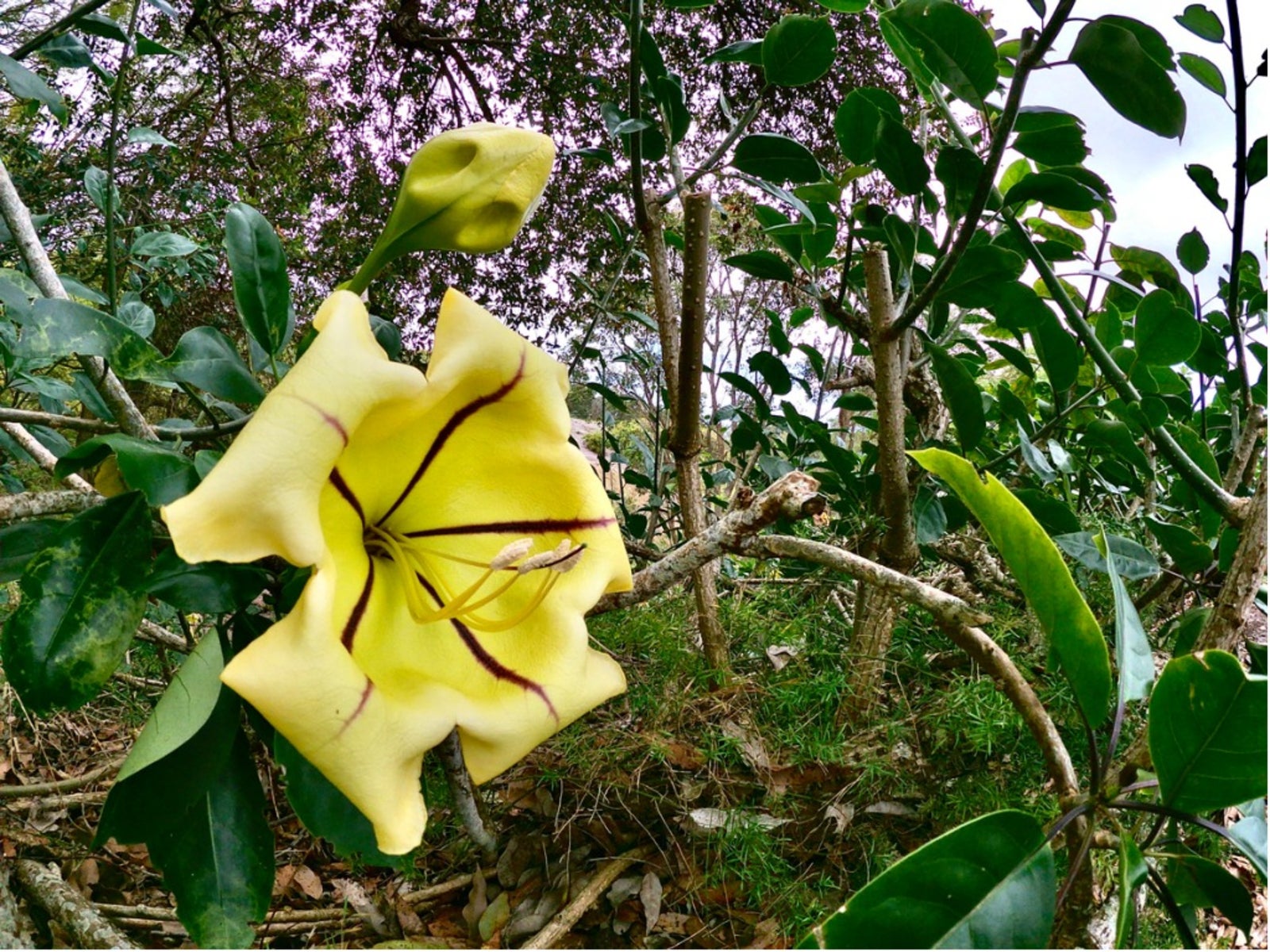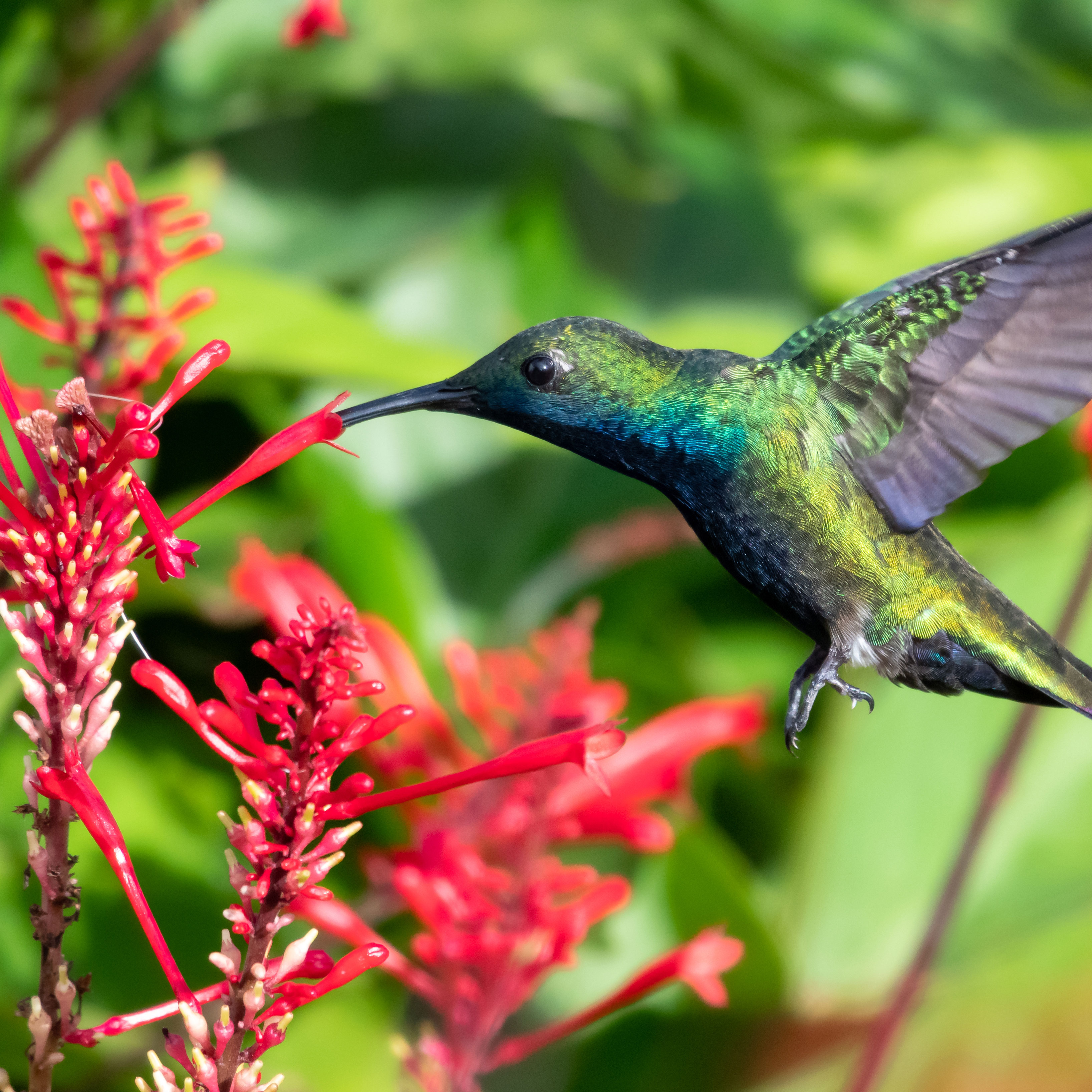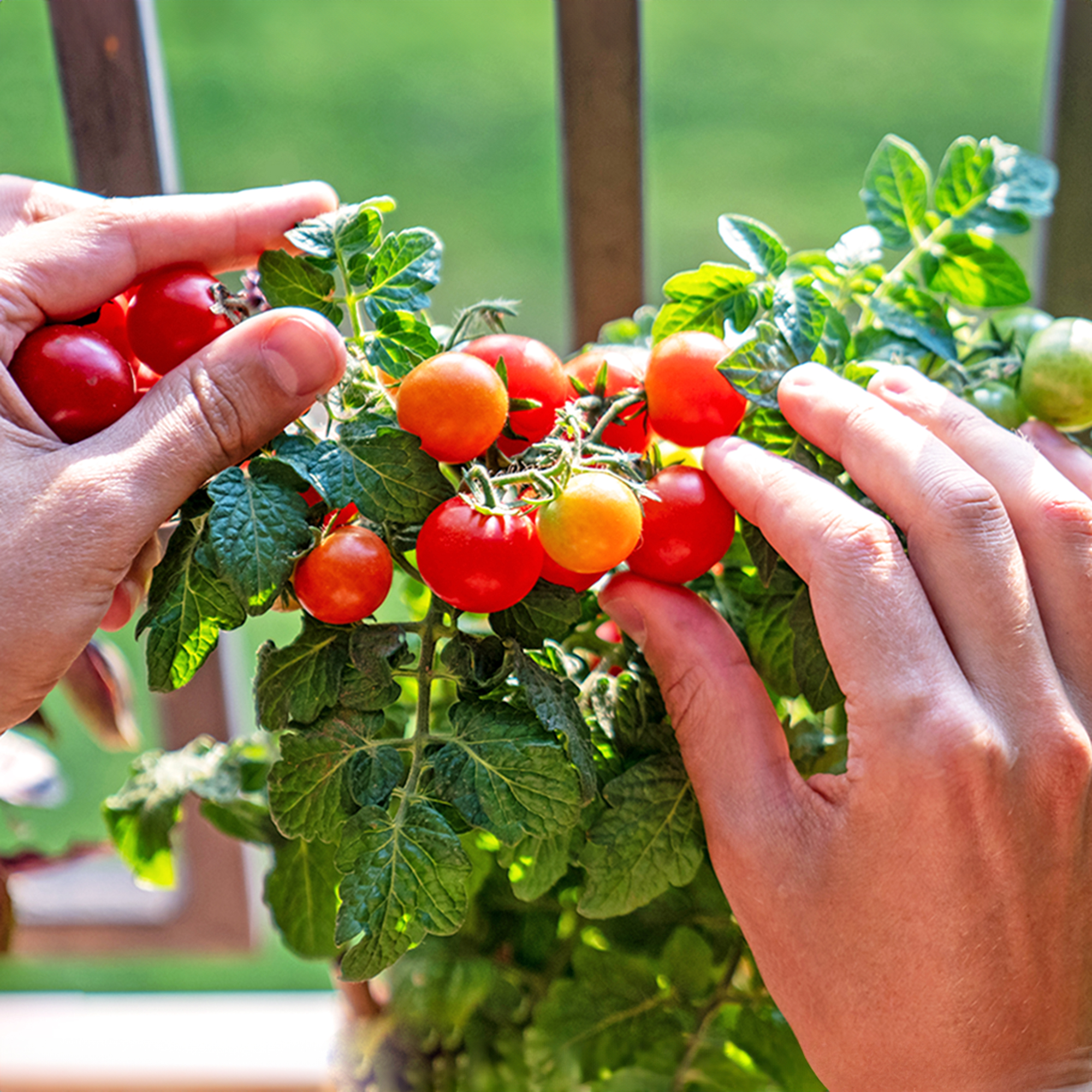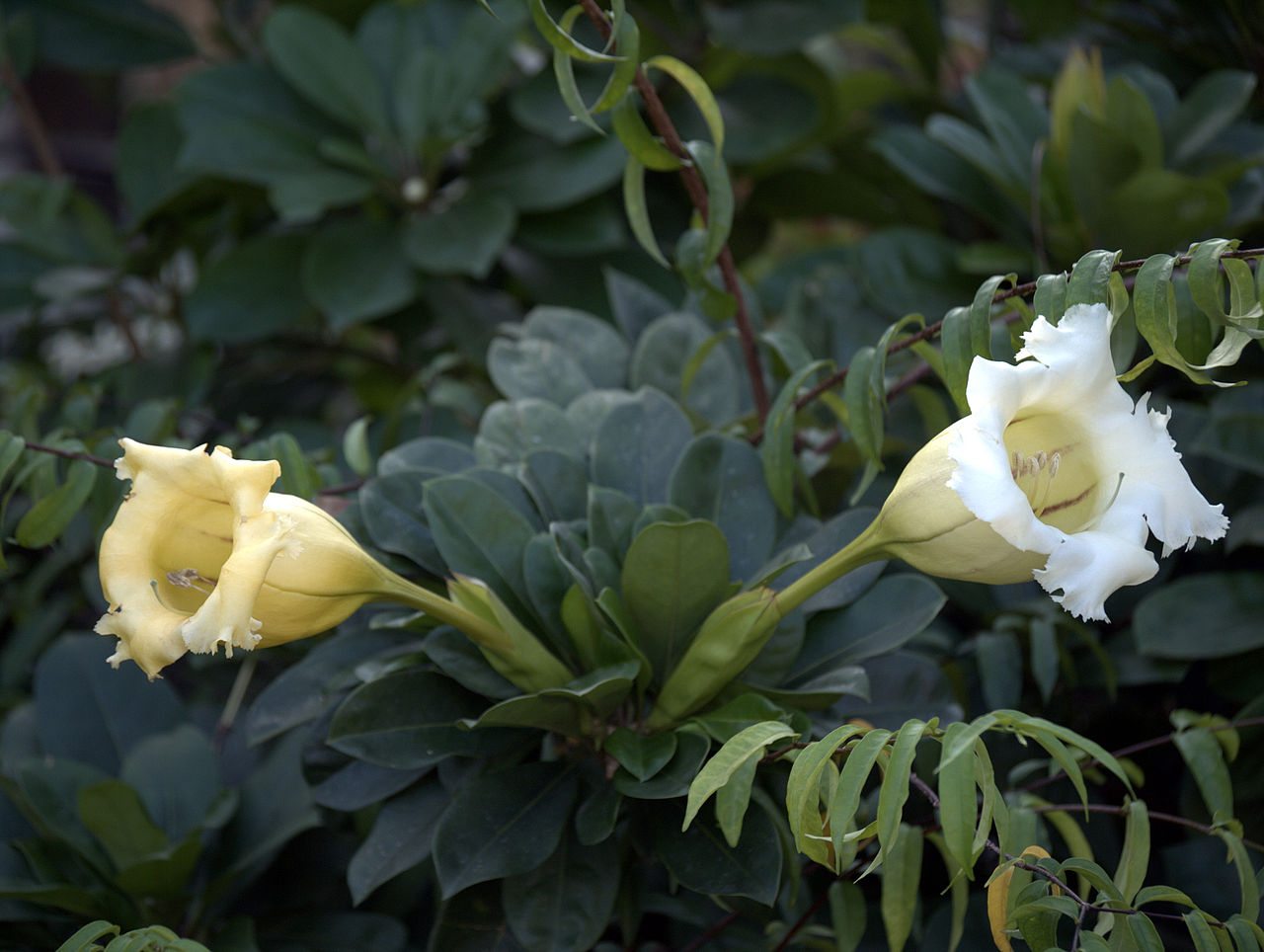Chalice Vine Information: Tips On Caring For Chalice Vines


Golden chalice vine (Solandra grandiflora) is a legend among gardeners. Perennial and fast-growing, this climbing vine relies on surrounding vegetation for support in the wild, and needs a strong trellis or support in cultivation. If you are wondering why this vine is so popular, read a little chalice vine information. You’ll see that the huge, chalice-shaped flowers can grow to 10 inches (25 cm.). If you’d like more chalice vine information, or information on chalice vine care, read on.
Chalice Vine Information
The golden chalice vine is not a delicate plant in any sense of the word. The base stalk is thick as a rope, and can grow over 200 feet (61 m.) long. Every single node on the vine sprouts tendrils and can take root. This makes the long vine stable and the many roots help provide it with necessary nutrients. Golden chalice vine produces dark green, thick leaves. These can get to 6 inches (15 cm.) long, growing from the main vine and side branches. The flowers arrive in a brilliant mix of yellow and white with spiraling stripes on the inside in purples and browns. In time, the colors darken into deeper shades of gold. The flowers are night bloomers, and if you’ve ever smelled the heavy, coconut fragrance, you aren’t likely to forget it. In the wild, the plant produces yellow berries with tiny seeds, but this is rare in cultivation. All parts of the plant are toxic and poisonous, so be aware of this before planting if you have pets or small children.
Caring for Chalice Vines
Chalice vine care starts with appropriate planting. Golden chalice vines are not picky, and perform best in any well-draining soil. Plant it in full sun or partial shade. One important part of caring for chalice vines is providing ample support. The vine is heavy and grows fast, so it needs a sturdy frame or support so it can climb. Since the vine grows rapidly, you may need to prune it frequently as part of chalice vine care. This is not a problem for the vine, and it tolerates severe pruning well. It flowers on new growth, so you can prune at any time of the year. To irrigate or not to irrigate, that is the question. The vine grows better with regular water, but it flowers better when you don’t water. Be sure to offer water, however, when the leaves begin to wilt. If you are interested in propagating chalice vines, take cuttings from stems in the summer. Then, to start propagating chalice vines, root the cuttings with bottom heat. They do best in zones 10 through 11.
Gardening tips, videos, info and more delivered right to your inbox!
Sign up for the Gardening Know How newsletter today and receive a free copy of our e-book "How to Grow Delicious Tomatoes".

Teo Spengler is a master gardener and a docent at the San Francisco Botanical Garden, where she hosts public tours. She has studied horticulture and written about nature, trees, plants, and gardening for more than two decades. Her extended family includes some 30 houseplants and hundreds of outdoor plants, including 250 trees, which are her main passion. Spengler currently splits her life between San Francisco and the French Basque Country, though she was raised in Alaska, giving her experience of gardening in a range of climates.
-
 Terrifically Tubular Flowers For Hummingbirds: 9 Tube-Flowered Plants To Attract Hummers
Terrifically Tubular Flowers For Hummingbirds: 9 Tube-Flowered Plants To Attract HummersGrowing tubular flowers for hummingbirds helps you create the optimum feeding conditions for your winged friends. Here are nine tubed delights for hummers
By Tonya Barnett
-
 How To Grow Hydroponic Tomatoes For Fresh Indoor Harvests – No Soil Required
How To Grow Hydroponic Tomatoes For Fresh Indoor Harvests – No Soil RequiredLearning how to grow tomatoes in water is easy and allows you to harvest fresh-home-grown produce in every season without any mess.
By Ellen Wells
